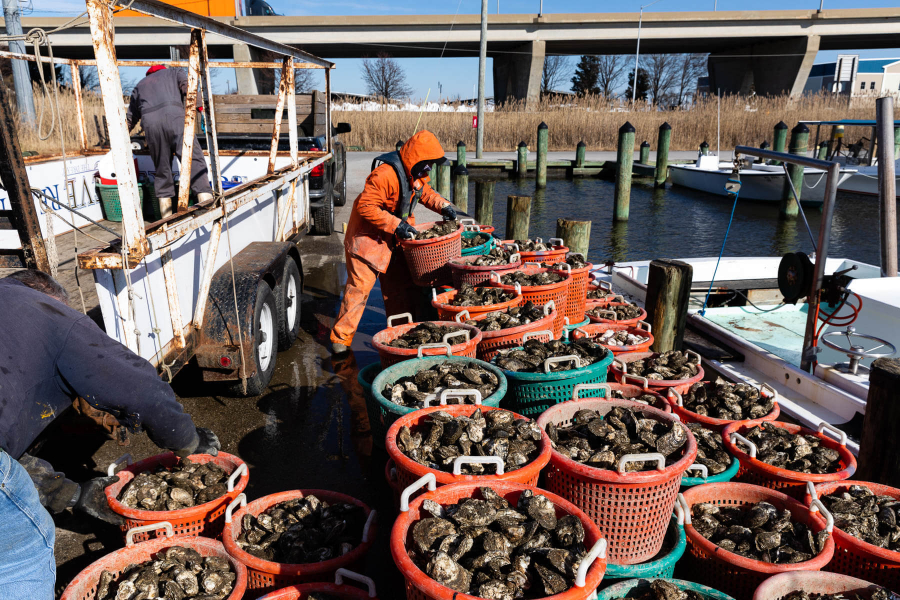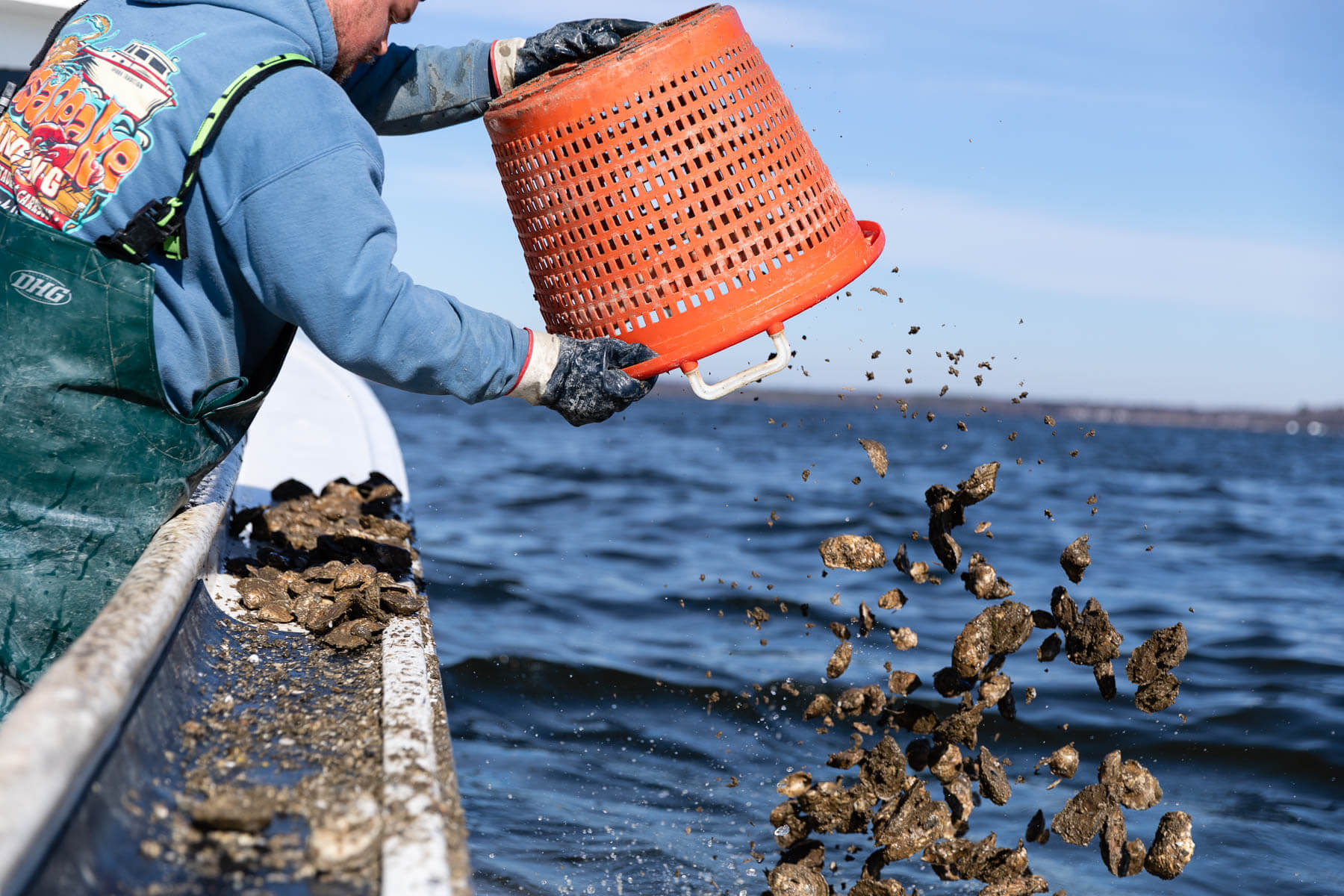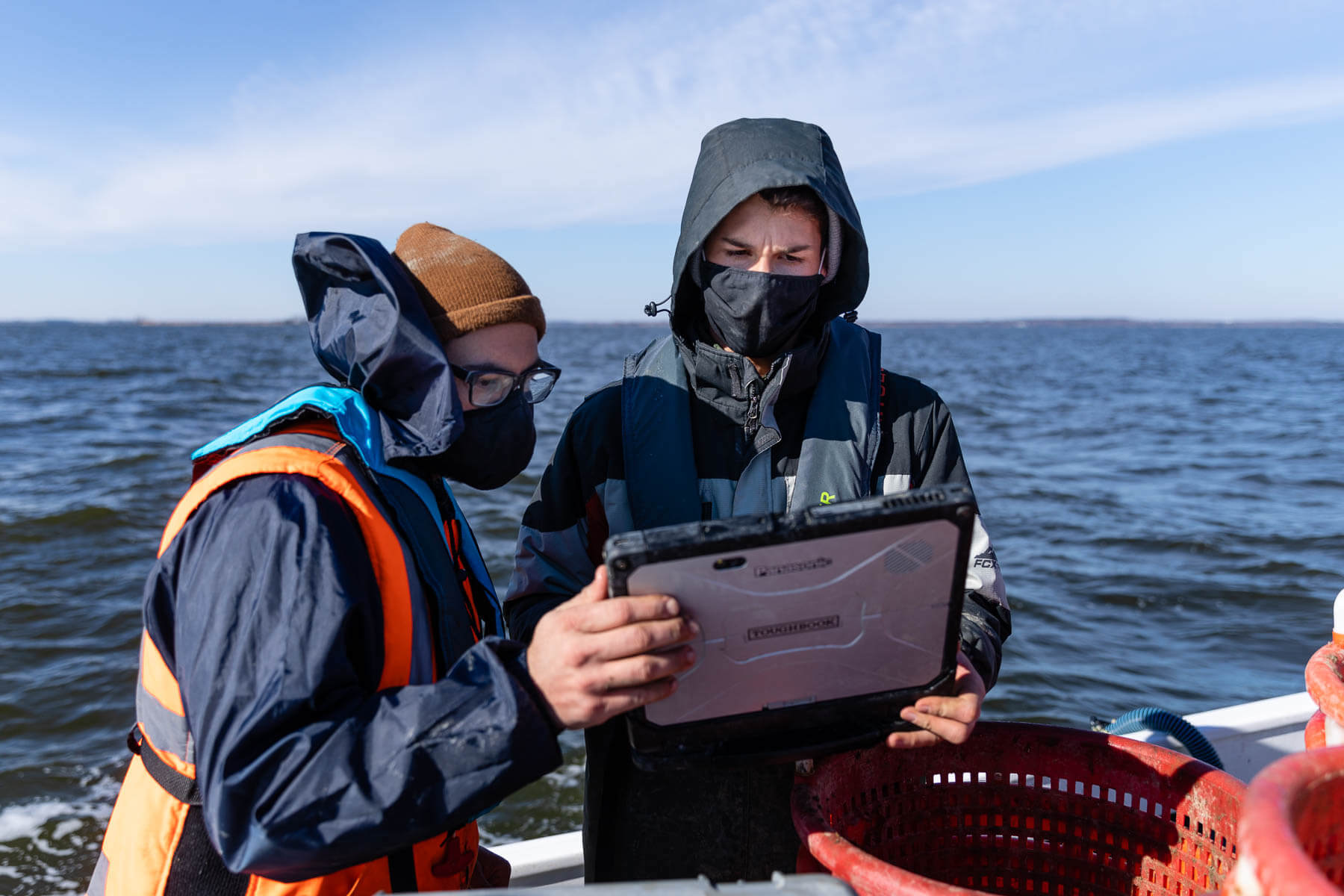Hard-hit oyster growers see silver lining in restoration
A program is buying unsold shellfish to bolster oyster reefs

Chesapeake Bay oyster farmers have not been spared from the hardships many people are facing due to COVID-19 pandemic quarantine measures. Shuttered restaurants and limited demand have left aquaculture operations with a glut of supply—oysters that are quickly growing past market size.
But a new program has allowed growers in seven states to sell their uneaten oysters for use in restoration. In the Chesapeake, The Nature Conservancy (TNC) is working with the Maryland Department of Natural Resources (DNR) and Oyster Recovery Partnership (ORP) to buy nearly one million oysters and plant them in select oyster sanctuaries, where they will contribute to wildlife habitat and filter nutrients from water. The effort is part of TNC’s two-year Supporting Oyster Aquaculture and Restoration (SOAR) initiative in collaboration with Pew Charitable Trusts, National Oceanic and Atmospheric Administration and the U.S. Department of Agriculture.
“Obviously we’re supporting an industry during a really difficult time,” said Mark Bryer, director of TNC’s Chesapeake Bay operations. “We’re also getting some conservation benefit from it.”
Bryer said the program had its origins nearly a year ago, as the country was shutting down and TNC started thinking of what it could do to support oyster aquaculture. Soon an anonymous donor funded the effort to buy the stranded shellfish and spread them on oyster reefs.

DNR helped TNC make sure the full range of oyster growers heard about the program. Roughly 20 growers in Maryland have committed so far. Jason Wilford of Pirates Cove Oyster Company recalled getting an email about the program in November.
“At that point we were sitting on a mountain of oysters [with] only a month really left in the holiday season, so it was kind of a no-brainer,” Wilford said.
Pirates Cove has sold about 30,000 oysters through the program. The company is finishing its first growing season, so the batch sold to TNC includes some of its very first oysters, which are about 18 months old and starting to take up valuable space in Wilford’s oyster cages.
“Yea it’s money in our pocket, but it also clears some space in our farm to put oysters,” said Wilford, who is already looking ahead to the start of the next growing season in a couple of months.
The three sites chosen in Maryland include the Nanticoke River, the St. Mary’s River and Mill Hill Oyster Sanctuary, south of Kent Island in Queen Anne’s County.
TNC worked with DNR to identify the best reefs to receive the oysters, focusing on oyster sanctuaries that are not only close to growers but also have suitable substrate where the oysters won’t sink into the mud. They also wanted to support smaller sanctuaries that haven’t already been the focus of extensive restoration efforts. Of the three chosen, only the St. Mary’s River is included in the five tributaries that Maryland is already restoring to meet the oyster outcome included in the Chesapeake Bay Watershed Agreement.
“Obviously we want to put these in a place where they’re going to survive and have the best chance,” Bryer said. “And we don’t want to duplicate effort.”
Mill Hill was the first to be planted, with Wilford and several other growers dropping off their oysters at Kent Narrows. Staff from ORP operated the logistics—measuring and counting the oysters, hiring watermen to haul them to sanctuary sites and ensuring the drop site falls within GPS coordinates provided by DNR.

The oysters purchased in Maryland—an estimated 3,800 bushels—include a mix of natural “diploid” oysters and fast-growing “triploid” oysters that won’t reproduce but will still provide the same filtering and habitat benefits.
Bryer said Mill Hill was chosen in part because it is lacking in broodstock—the population of mature, reproducing oysters—that has made it a more productive reef in the past. He hopes that the larger oysters that have just been planted will soon produce a lot of baby oysters that will “head out to some of the other areas that have been planted around the eastern Bay.”
"St. Mary's is another good example where a bunch of restoration has been done but we want to add a little bit more and provide a little bit of a boost for oyster productivity in that river," Bryer said.
Bryer also hopes the effort will lead to more partnerships with oyster growers in the future. Should aquaculture fall on hard times again, selling oysters for restoration could serve as a safety net. After all, as unsold oysters grow too large to sell to restaurants, they become desirable for other reasons.
“Those are perfect oysters for conservation,” Bryer said. “Big, funky shells which are great habitat for fish.”
Wilford said he would consider selling more oysters if growers are in the same situation in the spring. In the meantime, he has worked to find new markets for his oysters, in part by selling through Amazon.
“The way to get oysters to people is, I think, forever changed,” Wilford said.

Comments
This is fantastic news! What a great use of energy and resources to create a win-win-win situation.
Thank you!
Your comment has been received. Before it can be published, the comment will be reviewed by our team to ensure it adheres with our rules of engagement.
Back to recent stories